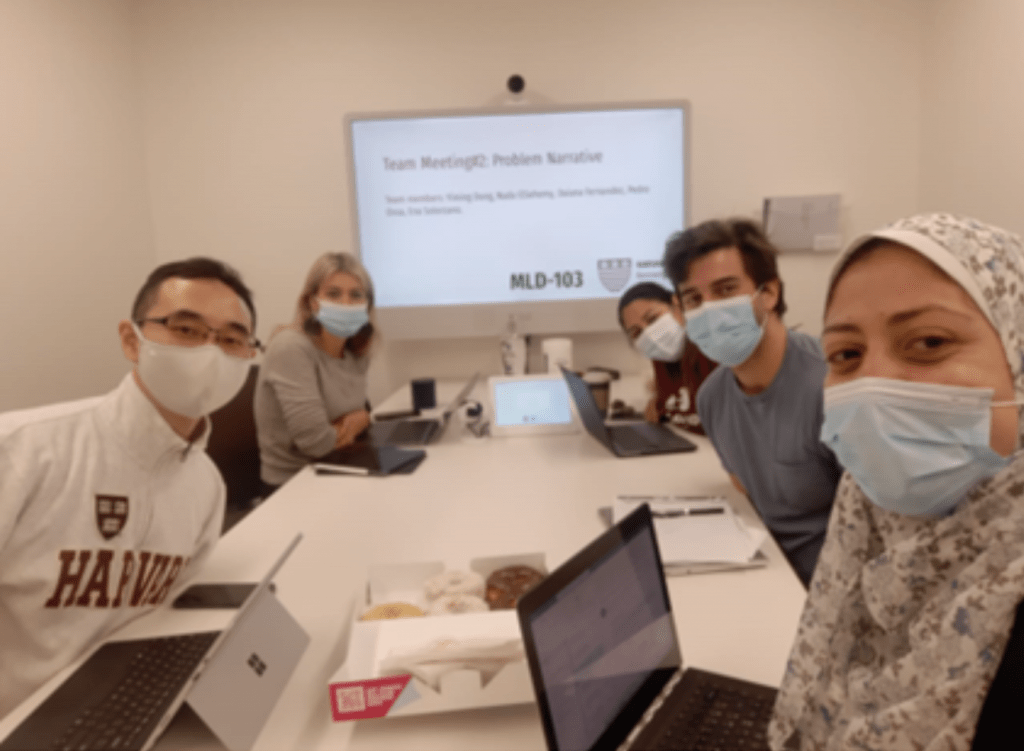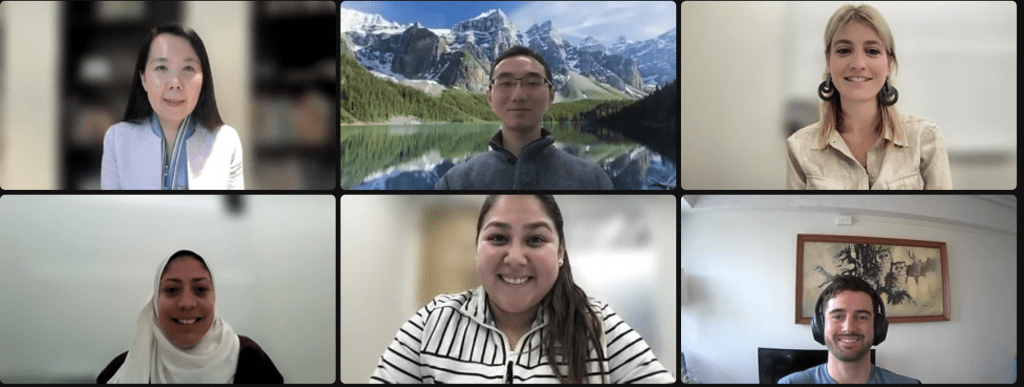Guest blog written by Yiming Dong, Nada ElSehemy, Daiana F. Molero, Pedro Ossa, Ena Solorzano
It was the beginning of the Spring semester. One Monday in late January was our first class of PDIA in action. That day we knew that for the next seven weeks we would be working on a completely unfamiliar topic: municipal solid waste management in China. Moreover, our team was unknown to us. We would have to learn a complex topic from scratch while forging a working bond with new colleagues in that short time.
“Don’t worry, trust the process, don’t get ahead of yourself. Step by step, you’ll get there.” We heard that advice in class and read it on the feedback of deliverables. However, we had a hard time believing it was true. Finally -spoiler alert- the day of our final presentation arrived, and we could deliver. The process had worked.
We learned about the circular economy, plastic polluting the ocean, and waste management strategies. But, most importantly, we experienced firsthand ways to make teamwork and solving complex problems easier.
Here are our main takeaways.
Working as a team
When we first met as a group, we had to create our team constitution. We set the rules for teamwork for the following weeks. We revised these rules and adjusted them when conditions changed. Having this clear framework avoided unnecessary tensions and allowed us to create a safe space to share our concerns and expectations. This tool was beneficial since we hadn’t worked together in the past and did not have a project manager or a vertical structure. Nonetheless, we believed that this approach could also benefit more structured organizations in creating safer environments and provide the space for people to bring new ideas and challenge initial assumptions.
Workload allocation was part of the team’s constitution. Since we had no pre-established roles, we chose to rotate our tasks. For example, the group meeting moderator and the authorizer’s meeting moderator would change every week. Alternation created a fair workload allocation and let each person run the meeting and submit the assignment using their approach. In addition, by rotating roles, we incorporated different perspectives that enriched our thinking processes.

Defining the problem
What is the problem? What are we trying to solve? These questions were hard to answer. The initial problem statement we received was:
“About 90% of plastics polluting the world’s oceans come from just 10 rivers, of which 8 are in Asia, including 5 in China. Municipal solid waste management plays an important role to reduce land-based sources of marine pollution. How can we promote a circular economy and reduce land-based sources of marine debris through enhanced municipal solid waste management in China?”
The first thing we had to do was to debug that initial problem. We knew it was biased because the solution was part of the definition (waste management). So we decided to express the problem broadly to avoid biasing and constraining our approach. So this was our first shot:
“The vast amount of plastic pollution coming from 5 rivers in China”
This new statement was too broad and vague to invite action. Why does this problem matter? To whom does it matter? Those questions were not addressed in the problem definition. So we gave it another try:
“Every year, approximately 8 million tons of plastic end up in the ocean (at this rate of pollution, by 2050, plastics in the sea will outnumber the fish population). Plastic pollution is an urgent problem because it compromises marine wildlife, threatens food security, and contributes to climate change. While it is a global issue, 90% of this contamination comes from 10 rivers, 5 of which are in China.”
This redefinition clarified why it was a problem. What remained unclear was who should care. Who were we talking to? After a new round of iteration, this was our final problem statement:
“Plastic pollution is flowing into rivers and the oceans through land waste. This is an urgent problem for China because:
- A big proportion of global marine plastic waste comes from 5 major rivers in China.
- It is comprising marine wildlife, threatening food security, and contributing to climate change.”
Through our iterations, we learned to keep the problem narrow and concise. That allowed us to appeal and resonate with a specific stakeholder yet maintain the link with the global issue to ensure buy-in.
Another main takeaway of the PDIA process is the importance of defining the problem without jumping into solutions. We are usually invested in the problem or the solution in real life, so updating or defining the former is more challenging without incorporating our biases. Knowing this, one can be cautious and set the conditions and processes to prevent this from happening.
Learning about the causes
To learn about the causes of the problem, we used the fishbone or Ishikawa diagram. Using this diagram helped us visualize that many of our causes were interlinked. We found the links in our fishbone through many iterations and merged similar bones. Structuring the causes using this diagram facilitated our learning process and helped us communicate our ideas. We used big and small bones to identify causes and sub-causes and colored them differently to clarify the connections. We also included a stakeholder map for each of these prominent bones as a reminder when thinking about potential ideas.


Another lesson from this process was the importance of being in touch with new people/ sources from the beginning and contrasting hypotheses as they arose. This lets us quickly update our fishbone if those hypotheses did not hold and promoted active learning. For example, our initial assumption was that public opposition wouldn’t be a massive limitation for governments to advance waste to energy investment projects in China. However, different academic articles and newspapers mentioned it as a problem. One of them listed all the delayed or canceled projects due to demonstrations, so we updated our fishbone accordingly. Being curious and open to changing your initial assumptions are critical ingredients for success.
Get the ball rolling
It is easy to get lost and paralyzed when dealing with unknown problems. There are so many things to understand that one feels safer devoting more time to doing research and theorizing than taking real action. If you focus on the research in excess, you could get biased even before working on the problem. If you don’t know the problem, it is tempting to look for familiar solutions you have already seen. Another limitation is that you may never feel confident enough to start doing something until you get all the pieces right, and with complex issues, it would never be the case.
Submitting assignments and engaging with new people every week was a way to get the ball rolling. Being open to learning from others and revising and updating our initial assumptions allowed us to move forward and overcome our insecurities.
This, more or less, was our journey. We came from knowing little about waste management in China to writing up solutions and an action plan. This quick immersion into the problem was effective. Meeting with the authorizer, engaging with different experts, reading new documents, and summarizing weekly work paid off. We gradually built up our knowledge, which eventually led to our accomplishment. So now we can say: “Trust the process, don’t get ahead of yourself. Step by step, you’ll get there.”

This is a blog series written by students at the Harvard Kennedy School who completed “PDIA in Action: Development Through Facilitated Emergence” (MLD 103) in March 2022. These are their learning journey stories.
